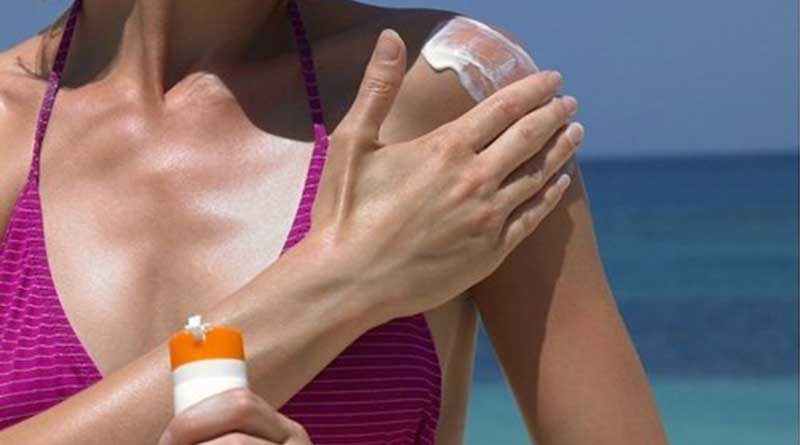Taking care of your skin is a task to which you must dedicate time daily. Hydration is very important to keep your skin free of dryness. But did you know that sunscreen is a product that you can never miss in your daily care routine? That’s why you should know how to choose the right one for you.When you are looking for the ideal sunscreen, the first thing to look for is the protection factor that it has. There lies the perfect care for your skin, since not all sunscreens are good for you.
What is the sun protection factor?
 Also known as FPS or SPF (for its acronym in English), is the index of protection that gives you a cosmetic product with sunscreen to be under the sun without burning for a certain time. Sunscreens act as a barrier to UVB rays so that they do not penetrate your epidermis.The index varies from 10 to 100 and each number is the multiple of time by which the product protects you, according to your skin type. For example, if your skin usually burns after 20 minutes in the sun without protection, when you use an SPF 30, that time will multiply by 30. That is, you will be protected for 600 minutes or 10 hours.This time is relative, does not necessarily mean that if you apply the protector only once will be enough to protect you for an exact period. This will depend on the activities you do under the sun. For example, if you bathe on the beach, river or pool, you must apply a protective coating every 30 minutes or every hour.
Also known as FPS or SPF (for its acronym in English), is the index of protection that gives you a cosmetic product with sunscreen to be under the sun without burning for a certain time. Sunscreens act as a barrier to UVB rays so that they do not penetrate your epidermis.The index varies from 10 to 100 and each number is the multiple of time by which the product protects you, according to your skin type. For example, if your skin usually burns after 20 minutes in the sun without protection, when you use an SPF 30, that time will multiply by 30. That is, you will be protected for 600 minutes or 10 hours.This time is relative, does not necessarily mean that if you apply the protector only once will be enough to protect you for an exact period. This will depend on the activities you do under the sun. For example, if you bathe on the beach, river or pool, you must apply a protective coating every 30 minutes or every hour.
Can I use any sun protection factor to take care of my skin?
The answer is no. Your skin type requires a specific sun protection factor. Each type of skin depends on genetic and ethnic factors. You know what’s yours?Phototype is the ability to assimilate and resist solar radiation. The Fitzpatrick scale, comprising 6 levels, is used to separate skin types . The 1 belongs to the types of white complexion and the number 6 to the darker skins.Each type of skin is determined by the degree of melanin in their cells. The more melanin, the greater the natural protection to the solar radiationthat the skin will have. For this reason white people need more protection from sunlight.To take care of your skin in the right way you must know what your phototype is. Take into account your physical characteristics and your reaction to the sun without protection for it. Learn to identify it with the following keys:
- Phototype 1: Very clear and sensitive skin. It always burns and does not tan.
- Phototype 2: It almost always burns and rarely tans.
- Phototype 3: Intermediate color. It burns moderately and tans frequently.
- Phototype 4: Brown skin. It burns slightly
- Phototype 5: Brown skin a little darker. It rarely burns.
- Phototype 6: Darker skin. It never burns.
Did you identify yours? If you have some doubts about it you can also go to a dermatologist to help you know your skin type according to the solar reaction.
What is the ideal sun protection factor to take care of my skin?
 Now that you know what your phototype is, you can take care of your skin with the indicated sunscreen. We will tell you what is the estimated time it takes for your skin to redden under the sun’s rays without protection. Based on this you should choose your sunscreen.If your phototype is 1, your skin usually becomes red after 5 or 10 minutes. The FPS level you should use is 50+. Phototype 2 also requires a 50+ SPF , since without protection the skin takes about 20 minutes to start burning.Phototypes 3 and 4 support an approximate unprotected time of 20 to 30 minutes and 30 to 40 minutes, respectively. Both require a sun protection factor of 30 to 50+.On the other hand, the numbers 5 and 6 of the scale do not present a greater risk of burning if they are exposed to the sun without protection. However, this does not mean that they should not protect your skin. Generally they can resist up to 60 minutes without sunscreen and the one indicated for them is one that has a level of protection of 30.Remember that caring for your skin is essential to enjoy good skin health. In addition, it is important to prevent diseases that could appear in the long term, such as skin cancer.Not only in the summer your skin needs to be protected, you also need it in the winter or in the shade. The sun’s rays are inclement and can penetrate your skin at any time. Therefore, do not give up your skin for a single day!
Now that you know what your phototype is, you can take care of your skin with the indicated sunscreen. We will tell you what is the estimated time it takes for your skin to redden under the sun’s rays without protection. Based on this you should choose your sunscreen.If your phototype is 1, your skin usually becomes red after 5 or 10 minutes. The FPS level you should use is 50+. Phototype 2 also requires a 50+ SPF , since without protection the skin takes about 20 minutes to start burning.Phototypes 3 and 4 support an approximate unprotected time of 20 to 30 minutes and 30 to 40 minutes, respectively. Both require a sun protection factor of 30 to 50+.On the other hand, the numbers 5 and 6 of the scale do not present a greater risk of burning if they are exposed to the sun without protection. However, this does not mean that they should not protect your skin. Generally they can resist up to 60 minutes without sunscreen and the one indicated for them is one that has a level of protection of 30.Remember that caring for your skin is essential to enjoy good skin health. In addition, it is important to prevent diseases that could appear in the long term, such as skin cancer.Not only in the summer your skin needs to be protected, you also need it in the winter or in the shade. The sun’s rays are inclement and can penetrate your skin at any time. Therefore, do not give up your skin for a single day!













